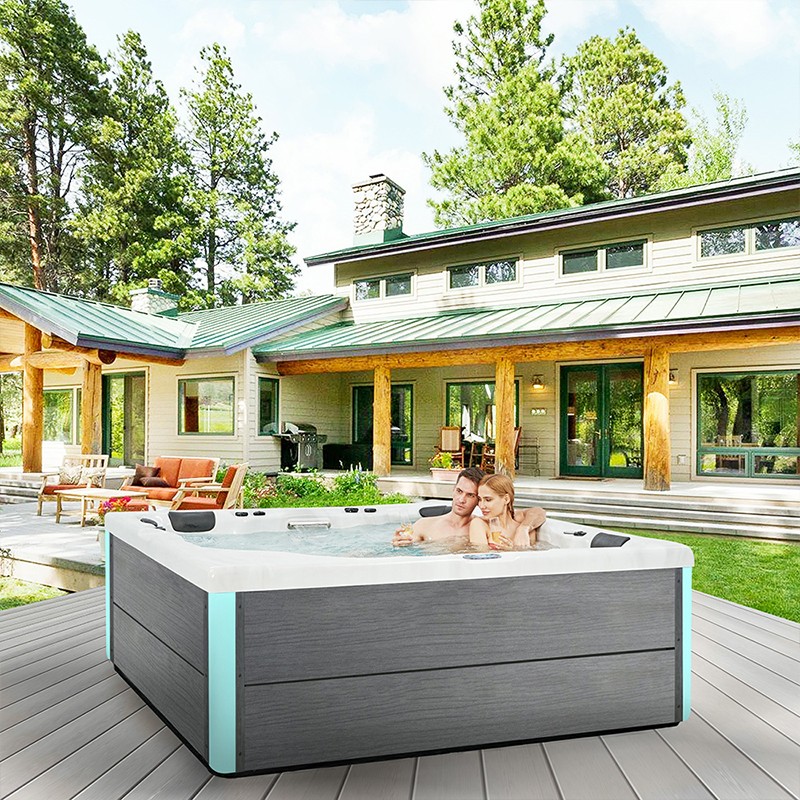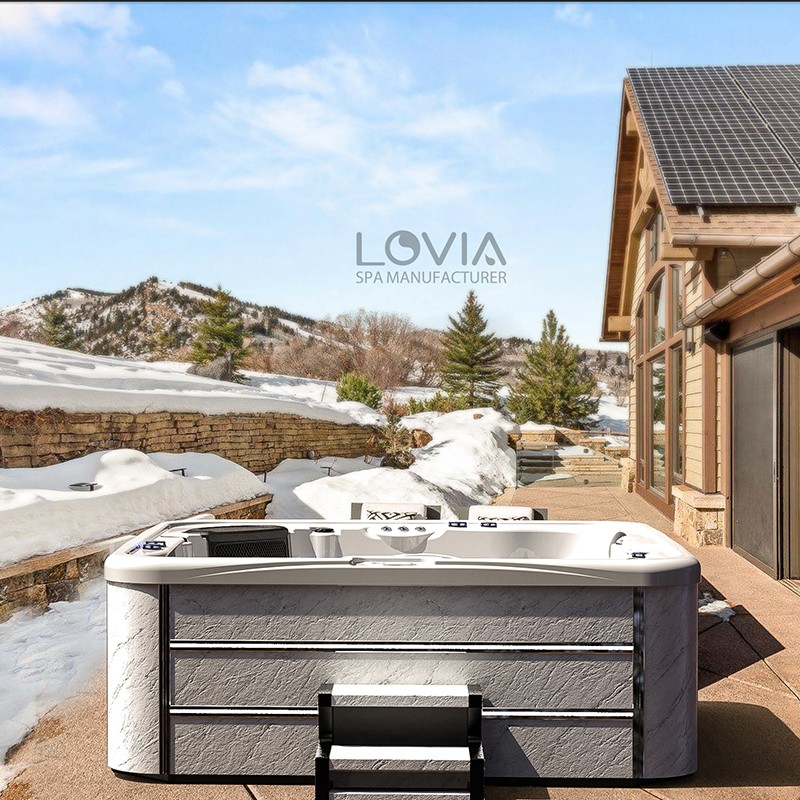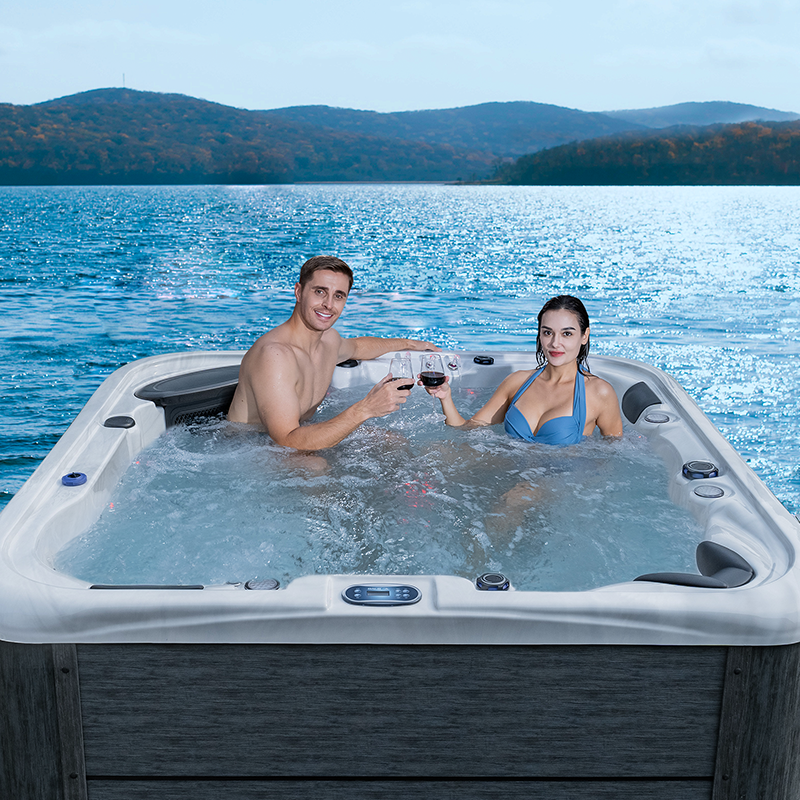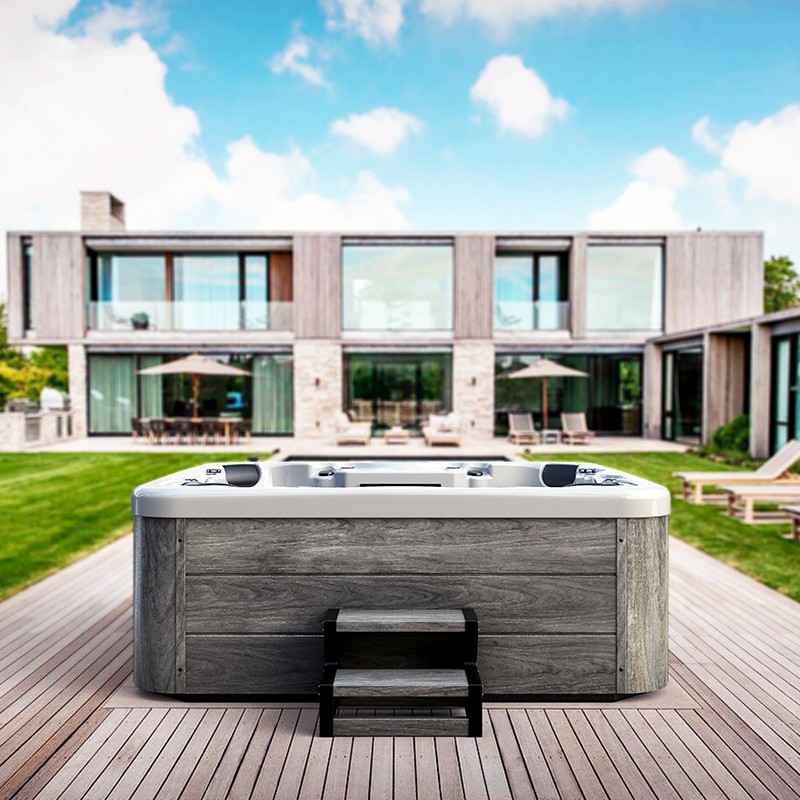
What percentage of people own a spa hot tub?
2025-09-17 15:30As a home and commercial amenity that combines relaxation, healing, and leisure, spa hot tub ownership rates have long been a key indicator in industry research. According to reliable data, approximately 1.8% of Americans currently own a spa hot tub. While this percentage may seem low, the popularity of spa hot tubs is actually influenced by a variety of complex factors, including consumer structure, usage habits, installation conditions, and cultural background.
This article will systematically examine the core question of "What percentage of people own a spa hot tub?" from multiple perspectives, including statistical analysis, social structure, market penetration paths, and consumer behavior. It will also comprehensively analyze the social acceptance and ownership rates of spa hot tubs, focusing on their functional attributes and demographic profiles.

Spa Hot Tubs: Basic Definition and Attributes
Before discussing spa hot tub ownership rates, it is important to clearly define what a spa hot tub is. A spa hot tub is a high-performance bathing device with a heating function, a built-in jet system, and a water pump circulation mechanism. It offers the following features:
· Continuous heating: Maintains the set temperature (typically 36°C to 40°C) for extended soaking.
· Hydrotherapy jet system: The nozzles are positioned to deliver high-pressure impact to the neck, back, and legs, creating a relaxing massage effect.
· Physical rehabilitation: Commonly used for non-pharmacological interventions such as physical therapy, joint relaxation, and muscle recovery.
· Multi-seat design: Typically accommodates one to seven people simultaneously.
· Mostly used outdoors or in a separate bathroom: Requires dedicated space and electrical access.
The main difference between a spa hot tub and a regular bathtub is that it integrates three systems: water dynamics, temperature control, and rehabilitation. This makes it expensive and complex to maintain, resulting in a spa hot tub's ownership rate remaining within a certain social class.

Global Overview of Spa Hot Tub Ownership
According to currently available reliable market research data, spa hot tub ownership rates vary significantly worldwide. The following is a rough estimate of spa hot tub ownership in several representative countries or regions (all estimates):
Country/Region | Ownership rate (approximately) |
| United States | 1.8% |
| Canada | 2.3% |
| Australia | 1.2% |
| Western Europe (e.g., Germany, France) | 0.8%–1.1% |
| Japan | <0.5% |
| China | <0.2% |
The data shows that the primary market for spa hot tubs is concentrated in developed countries or regions with high spending power and a high concentration of single-family homes. While the US's 1.8% may not seem high, considering its population of approximately 330 million, this means approximately 5.94 million people own a spa hot tub.
The Implications of 1.8%: Detailed Population Structure Analysis
1. By Income Distribution
The purchase, installation, and maintenance of spa hot tubs are not low-cost activities. Generally speaking, owners are concentrated in the upper-middle income bracket or above. The following is a rough breakdown:
· High-income group (annual income >$100,000): approximately 57%
· Upper-middle income group (annual income $60,000–$100,000): approximately 32%
· Lower-middle income group: less than 11%
This indicates that the widespread adoption of spa hot tubs is still significantly constrained by economic barriers.
2. By Residence Type
· Single-family homes: The highest rate of spa hot tub ownership;
· Townhouses/apartments: Ownership rates are significantly lower;
· Rental homes: Almost none have spa hot tubs;
· Self-built homes in rural or remote suburbs: Relatively high willingness to install one, provided space permits.
Thus, the popularity of spa hot tubs depends largely on the privacy, adaptability, and electrical accessibility of the living space.

Analyzing Spa Hot Tub Usage Behavior
Simply examining "who owns a spa hot tub" is insufficient; in-depth research into "how owners use it" is equally crucial to understanding its value density and functional coverage.
According to statistics, approximately 73% of spa hot tub owners primarily use it for hydrotherapy or physical therapy. This reflects a shift in the focus of spa hot tub usage from simple bathing to wellness. Main uses include:
· Muscle relaxation: particularly for those with back and neck fatigue;
· Joint rehabilitation: for joint flexibility training for the elderly or those recovering from surgery;
· Psychological stress relief: using the flow and heat of water to stabilize heart rate and reduce anxiety;
· Family socializing: simultaneous use by multiple people fosters family bonding;
· Daily relaxation: replacing traditional bathing with a more ritualistic and sustainable approach.
This also reflects that, despite a low ownership rate, spa hot tubs are used frequently and utilized very frequently among those who do own them.
Major Factors Limiting Spa Hot Tub Popularity
To understand why spa hot tub ownership is only 1.8%, we need to analyze its "barrier factors," which primarily include the following:
1. High Installation Cost
A standard spa hot tub costs between $3,000 and $15,000 to purchase, with installation, power supply, water supply, and structural reinforcement potentially incurring an additional $2,000 to $8,000. This high investment limits its target customer base.
2. High Maintenance and Operating Costs
A spa hot tub requires thorough cleaning, water quality testing, pump inspection, and component replacement two to four times a year, costing an average of $500 to $1,000 annually. Furthermore, electricity costs for heating and pump operation are significantly higher, adding an average of $25 to $50 per month.
3. Space Constraints
Urban residences, particularly apartments and high-rise buildings, rarely accommodate spa hot tubs. Even if desired, space and structural constraints often make them impractical.
4. Differences in Consumer Culture
In some cultures, public baths and showers are more common, while private bathing is less common. This has also limited the global adoption of spa hot tubs.

Spa Hot Tub: Estimating Ownership Rates at the Household Level
Expanding from per capita ownership rates to household levels provides a more realistic analysis. Take the United States as an example:
· Total population: 330 million;
· Average household size: approximately 2.5 people;
· Number of people with a spa hot tub: approximately 5.94 million;
· The number of households with a spa hot tub is approximately: 5.94 million ÷ 2.5 = approximately 2.37 million.
Of the approximately 130 million households in the US, this means that only approximately 1.8 out of every 100 households have a spa hot tub.
Social symbolism beyond the data
Although the actual ownership rate of spa hot tubs is low, as a symbol of a healthy lifestyle, they hold a high status in social perceptions:
· A standard feature in high-end residential design;
· A standard amenity in health and retirement communities;
· A symbol of high-quality family leisure;
· A standard feature in rehabilitation and medical institutions.
Thus, despite a low ownership rate of 1.8%, public awareness of spa hot tubs far exceeds the actual ownership rate.
Spa hot tubs: How to understand the significance of 1.8%?
Although only 1.8% of Americans own a spa hot tub, this percentage is already high globally. This percentage is driven not only by practical factors like affordability and housing conditions, but also by consumers' ongoing pursuit of health, comfort, and quality of life.
The value of spa hot tubs lies not only in their ownership rate but also in the consumer philosophy, efficiency, and depth of functionality they embody.
From this perspective, while ownership rates are currently low, spa hot tubs have long been deeply ingrained in the modern family's vision of high-quality living, providing medical assistance, rehabilitation and relaxation, and fostering family intimacy.
Do you offer customized spa solutions for wholesale buyers?
Yes, our factory and company are specialized in providing customized spa designs to meet different market demands. As a professional manufacturer and supplier, we understand that wholesale buyers need flexibility. With over 20 experts and 200 skilled workers, our Lovia Spa brand can adapt quickly to bulk purchasing and promotional sales orders.
Many of our international clients choose us because they can buy high-quality spas at cheap wholesale prices, enjoy discounts on bulk orders, and receive detailed quotes tailored to their business needs.
